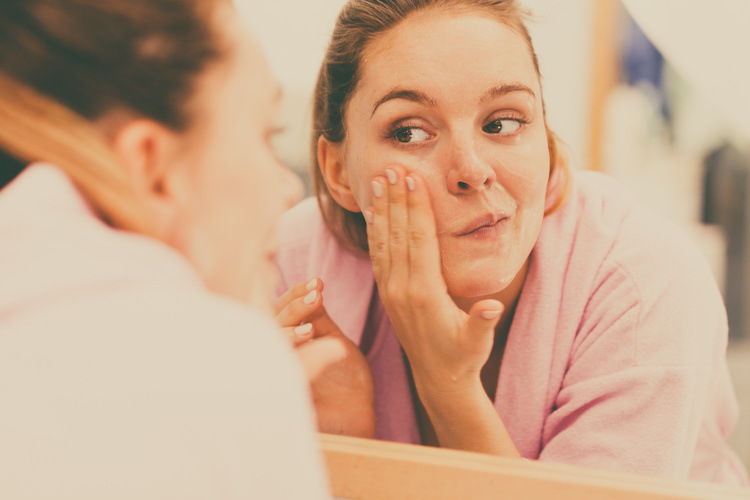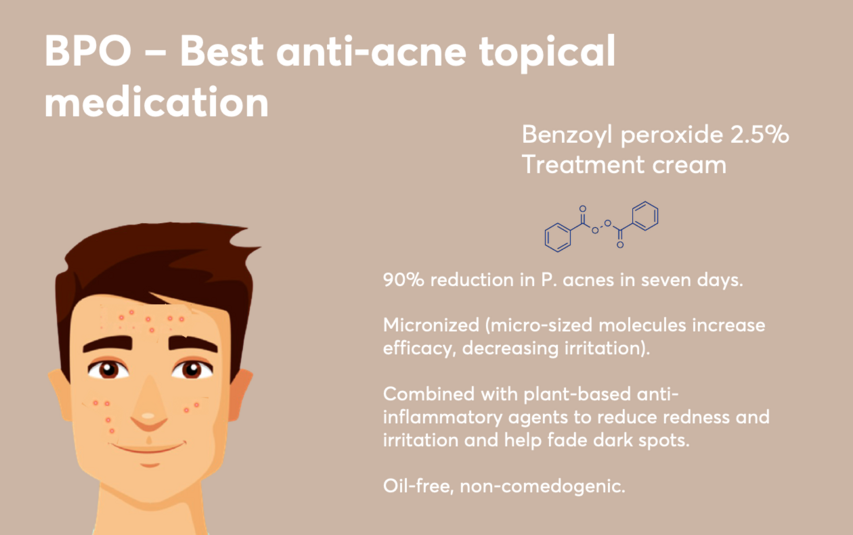What is Benzoyl Peroxide? Best Benzoyl Peroxide product?

Benzoyl Peroxide: An Essential Treatment for Acne
Benzoyl peroxide (BPO) is widely regarded as one of the most effective topical treatments for acne. It’s known for its antibacterial, anti-inflammatory, and exfoliating properties, making it a powerful solution to reduce acne-causing bacteria, unclog pores, and decrease inflammation. The American Academy of Dermatology identifies BPO as the top topical anti-acne treatment, not only due to its effectiveness but also because it reduces the risk of bacterial resistance.
How Benzoyl Peroxide Works
BPO targets acne in multiple ways:
- Eliminates Bacteria: It quickly reduces Cutibacterium acnes (formerly P. acnes) by up to 90% in just seven days.
- Prevents Resistance: Unlike antibiotics, acne-causing bacteria do not develop resistance to BPO.
- Reduces Sebum and Clogs: It helps break down excess oil and unclogs pores, which can reduce blackheads and whiteheads.
However, BPO may cause mild dryness and redness, especially when starting treatment. These effects can often be minimized by adjusting the concentration according to skin type and using newer formulations, such as micronized benzoyl peroxide, which offer enhanced efficacy with reduced irritation.
Clinical Studies Supporting Benzoyl Peroxide
Multiple studies underscore BPO’s effectiveness and safety in managing acne:
- Long-Term Safety Study: Research demonstrated that 2.5% and 5% BPO gels are both effective and safe for long-term acne treatment, showing significant lesion reduction with minimal side effects (Kawashima et al., 2017).
- Comparison of Antimicrobial Regimens: This study found that BPO performs comparably to oral antibiotics and combined topical therapies, supporting its role as a primary treatment for mild to moderate acne (Ozolins et al., 2004).
- Efficacy in Reducing Lesions: A multicenter, placebo-controlled study showed substantial improvement in both inflammatory and non-inflammatory acne lesions with BPO gel use, confirming its efficacy as a standalone treatment (Kawashima et al., 2017).
Choosing the Right Benzoyl Peroxide Product
Not all BPO products are created equal. The effectiveness and potential for irritation depend on the product’s formulation, concentration, and additional ingredients.
- Micronized BPO: This refined form of BPO offers enhanced penetration and reduced irritation. MDacne’s benzoyl peroxide treatment cream, for example, uses micronized BPO combined with plant-based ingredients, including Vitamin C, Green Tea, Cucumber, and Licorice Extract, to calm the skin, lighten dark spots, and improve overall skin tone.
- Concentration: BPO is available in 2.5%, 5%, and 10% concentrations. Studies indicate that 2.5% and 5% concentrations are as effective as 10% but with fewer side effects. For most people, lower concentrations are preferable to avoid excessive dryness and irritation.
- Cream vs. Wash: Leave-on creams and gels are generally more effective than washes since they have more time to work on the skin. However, washes can still be useful for people with very sensitive skin or those just beginning treatment.

Combining Benzoyl Peroxide with Other Ingredients
BPO is often used in combination therapies:
- With Antibiotics: Combining BPO with clindamycin or erythromycin (e.g., Benzaclin or Benzamycin) can improve effectiveness for some users.
- Retinoids: While combining BPO with retinoids like adapalene (found in Epiduo) can be effective, it may also cause irritation. For many, alternating applications or choosing one treatment may be preferable.
- With Plant-Based Extracts: MDacne’s BPO products include antioxidants like Vitamin C, Licorice Extract, and Green Tea, which help reduce redness and post-acne pigmentation.
Using Benzoyl Peroxide in Your Routine
BPO should be applied as part of a comprehensive acne regimen. Here’s how to integrate it:
- Cleanse: Use a gentle, non-comedogenic cleanser in the morning and evening.
- Moisturize: Apply an oil-free moisturizer in the morning to prevent dryness.
- Night Treatment: Apply a pea-sized amount of BPO cream at night, targeting the entire affected area rather than individual spots. For sensitive skin, mix BPO with moisturizer before applying.
For optimal results, start with lower concentrations and gradually increase as your skin tolerates it. Avoid sensitive areas such as around the eyes, nose, and mouth.
Side Effects of Benzoyl Peroxide
Common side effects include:
- Dryness and Redness: These are common in the initial stages but typically decrease over time.
- Fabric Bleaching: BPO can bleach non-white fabrics. Allow it to dry fully before touching clothes or bedding.
- Allergic Reactions: Rare but possible, especially for individuals with allergies to benzoic acid derivatives.
Benzoyl Peroxide for Rosacea and Other Conditions
BPO isn’t just for acne. It’s effective in treating other skin conditions like:
- Rosacea: Lower concentrations (2.5%) of BPO with anti-inflammatory plant extracts are ideal for papulopustular rosacea.
- Fungal Folliculitis: BPO can help manage conditions like pityrosporum folliculitis, often referred to as fungal acne.
Expectations with Benzoyl Peroxide Treatment
- Week 1: Initial dryness and possible mild irritation as the skin adjusts.
- Week 2: Redness and breakouts begin to reduce as the skin builds tolerance.
- Week 4: Fewer breakouts and smoother skin texture.
- Week 12: Significant improvement with consistent use.
- Week 24 and Beyond: Clearer skin with maintained results. Reduced product usage may be possible as the skin clears.
Summary
Benzoyl peroxide is a versatile, effective, and safe treatment for a wide range of acne types and other skin conditions. By choosing the right formulation and concentration and integrating it into a comprehensive skincare routine, BPO can help manage and prevent breakouts while improving overall skin clarity. With personalized treatment, such as that offered by MDacne’s BPO-based creams enriched with soothing plant extracts, many users can achieve clear, healthy skin with minimal side effects.
Shop:
MDacne's Benzoyl Peroxide 2.5% Kit 60 Days (amazon).
Benzoyl Peroxide 2.5% (Amazon).
Benzoyl Peroxide 5% (Amazon).
Body Acne Benzoyl Peroxide 5%
Hydrating Acne Cleanser (Amazon).
Oil-free Sunscreen (Amazon).
Acne Supplements for Teen Acne (Amazon).
Acne Supplements for Adult Acne (Amazon).
More Info:
Best benzoyl peroxide cream for body acne
What's the difference between salicylic acid and benzoyl peroxide?
References:
- A call to limit antibiotic use in acne. J Drugs Dermatol. 2013;12:1331–1332.
- Antibiotic stewardship in dermatology: limiting antibiotic use in acne. Eur J Dermatol. 2014;24:330–334.
- Management of acne: a report from a Global Alliance to Improve Outcomes in Acne. J Am Acad Dermatol. 2003;49:S1–S37.
- Anti-inflammatory actions of benzoyl peroxide: effects on leucocytes' generation of reactive oxygen species and the activity of protein kinase C and calmodulin. Br J Dermatol. 1994;130:569–575.
- The short-term treatment of acne vulgaris with benzoyl peroxide: effects on the surface and follicular cutaneous microflora. Br J Dermatol. 1995;132:204–208.
To find the right acne treatments for your unique skin, take the free skin assessment by clicking here.



